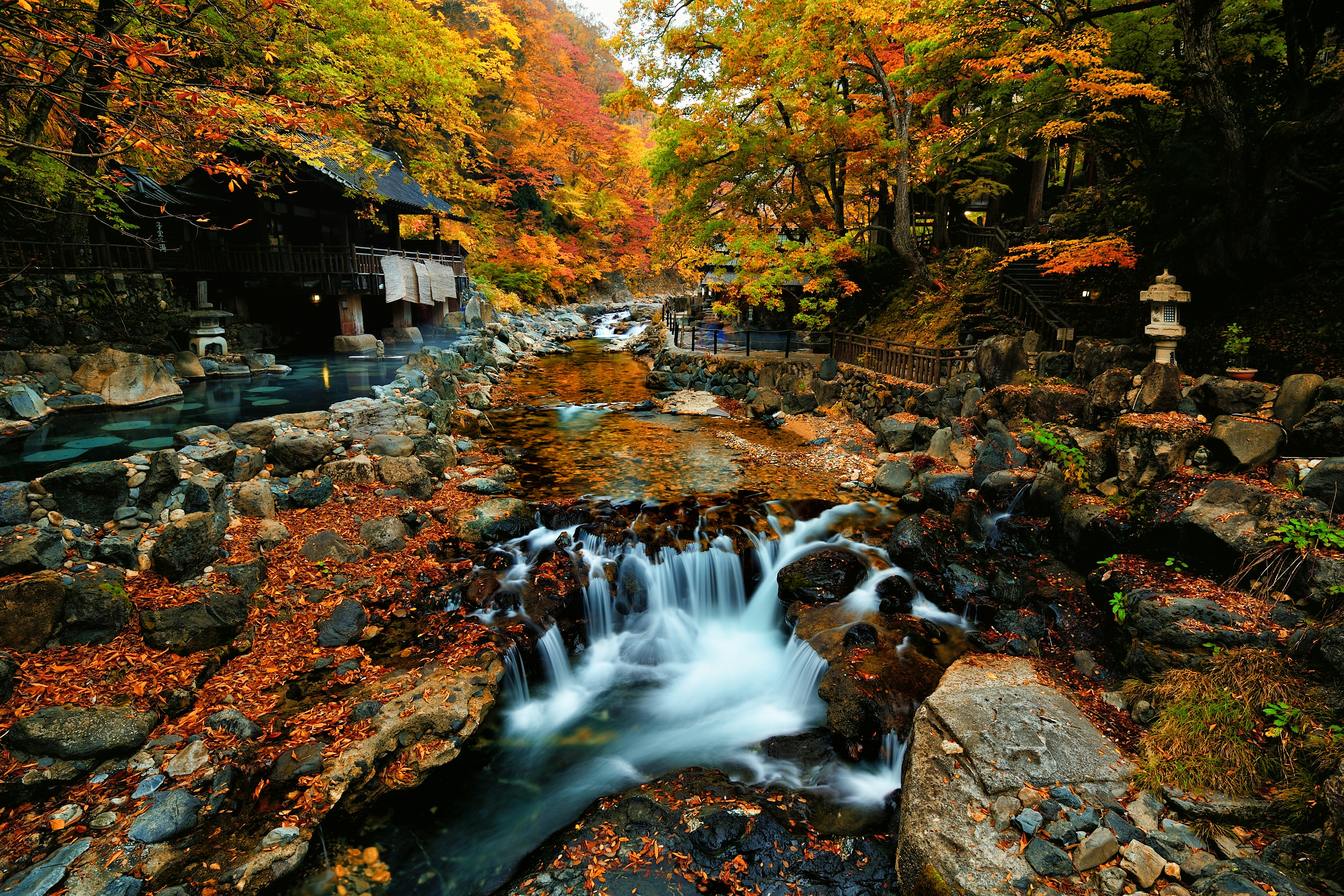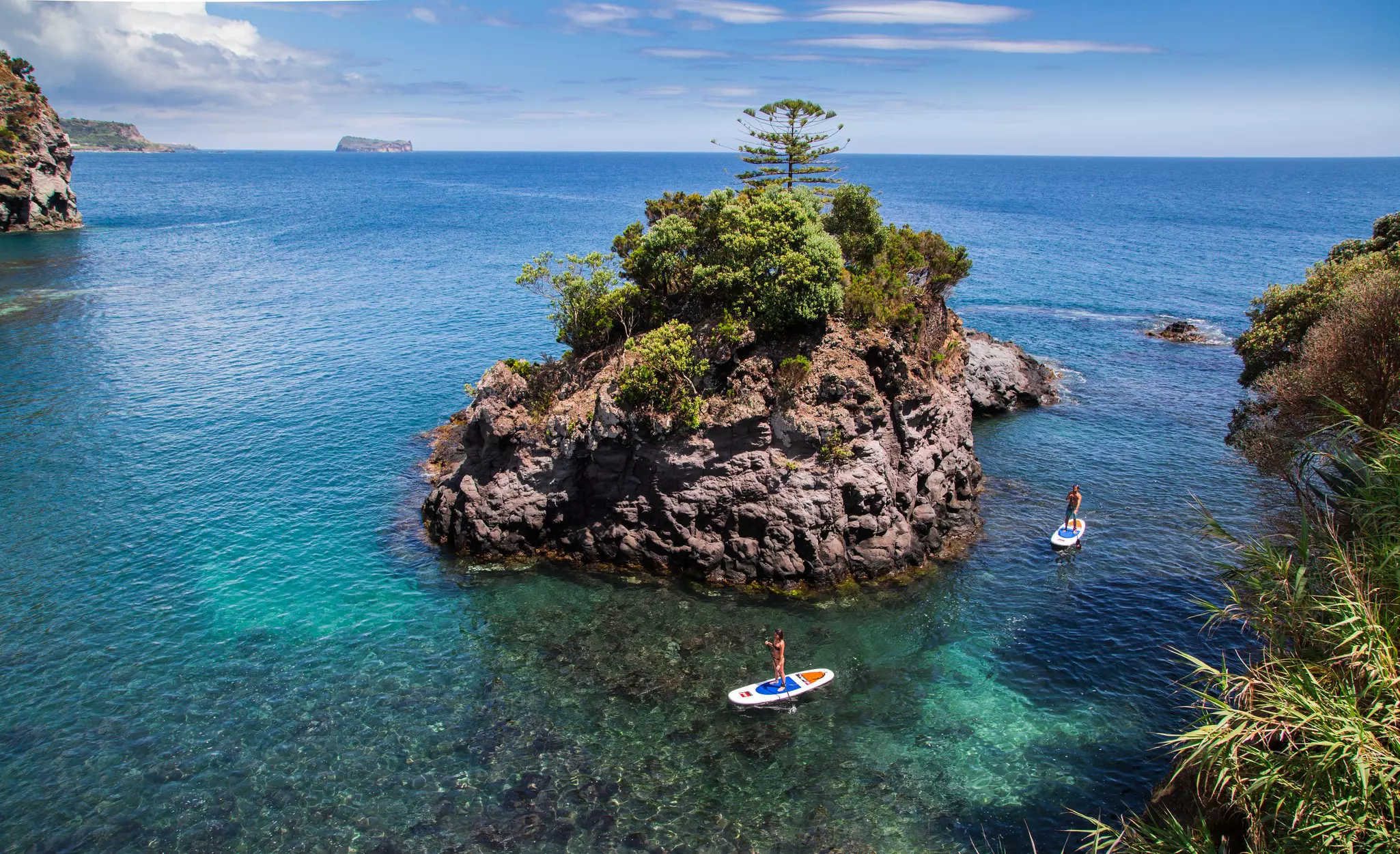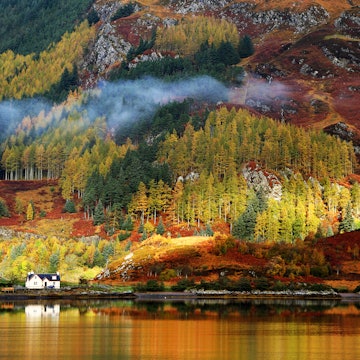
Steamy, snowy, stunning: Gunma Prefecture has something for everyone

Sep 30, 2020 • 5 min read

Snowy hills frame the steamy hot springs at Manza Onsen in Japan's Gunma Prefecture © Visit Gunma
Take a look at a map of Japan and it’s easy to see why this island nation has such a connection to the sea. Of the country’s 47 prefectures, only eight do not have a coastline.
Yet the mountains of Japan’s interior are equally beautiful and revered for their water sources. Just an hour north of Tokyo, Gunma Prefecture is one of those eight landlocked prefectures. And what it doesn’t have in the way of sand or surf, its stunning mountainous terrain more than makes up for with its own incredible water-based activities.
From the invigorating natural force of its rivers and waterfalls, to the calming stillness of its picturesque lakes and more than 400 natural onsen (100 of which feature accommodations), to its world-class snow scene, Gunma makes its abundant waters available to everyone. For a real treat, stay in a traditional Japanese ryokan in the many onsen towns and enjoy on-site hot spring bathing at the end of each day’s sightseeing.
Whether your objective is to get your heart pumping or to relax and unwind, here are some of Gunma Prefecture’s must-see water-themed highlights.

Kusatsu Onsen
Kusatsu Onsen is one of the best and most unique onsen (hot springs) resort towns in Japan. Right in the town center, you’ll find the steaming yubatake or “hot water field.” It gushes out an incredible 8,500 gallons of natural onsen water with a pH value of almost 2.1 every minute – the highest volume and one of the most acidic hot springs in Japan. Place a nail in the water and it will dissolve in a week.
Its unique mineral qualities make Kusatsu Onsen a particularly renowned center for healing and wellness. In fact, it takes 30 years for the water to attain this level of therapeutic benefit. Starting as rain and melted snow fallen atop Kusatsu’s volcanic Mount Shirane, it seeps into the ground, slowly absorbing mineral components. Heated by magma along the way, it finally reaches the lower elevation of the town, where it’s pumped out in spectacular fashion in the yubatake.

A trip to Kusatsu feels nothing short of decadent, where visitors can spend several days hopping from one hot spring to the next. Absolutely do not miss the staggering 5,380-square-foot Sainokawara Rotenburo, one of the biggest outdoor baths in the country, or the adjacent Sainokawara Park, a rocky valley with rejuvenating footbaths made up of hot streams and ponds.
For indoor bathing, Otakinoyu provides the most variety and features the awaseyu (or partition baths), a unique tradition in which you start at a bath of lower temperature and slowly make your way up to the hottest one.

Minakami snow and adventure sports
Gunma Prefecture has long been a local favorite for nature and adrenaline-pumping adventure sports close to the country’s capital. During the winter, skiing, snowboarding and snowshoeing are all popular activities.
About three miles north of the onsen town of Minakami, Tanigawadake Tenjindaira or ‘Tenjin’ for short, is one of the top ski destinations in Japan. With snowfall of about 12-16 feet on average, and a base of over 9 feet, it has some serious powder. Advanced skiers can hire a guide and explore Tenjin’s legendary backcountry options, considered to be some of Japan’s best big mountain terrain.

Adventure seekers shouldn't miss canyoning in Minakami, the biggest canyoning destination in the world. From late April to late October, visitors can explore the gorgeous and divinely cool nearby canyons by swimming, scrambling over rocks, sliding down chutes, jumping into pools and rappelling down waterfalls.
Minakami is also a premier location for white-water rafting. In the spring, the Tone River has raging rapids from the melted snow, while the summer affords a lower water level and slower pace.

Lake Okushimako
Situated just a few miles from Shima Onsen is Lake Okushimako, a man-made lake created as a result of damming the Shima River. While it may have artificial origins, it is its natural beauty that lures visitors, notably its striking cobalt blue hue that locals have coined “Shima blue” – a color they claim can be seen nowhere else.
In the warmer months, visitors can explore the lake at a relaxed pace by canoe or paddleboard, marveling at the transparent waters and surrounding tree-laden mountain landscape – fresh and green in the spring and summer, and fiery oranges and reds in the autumn.

Oze National Park
Gunma’s plentiful waters are not reserved only for those who want to get in or on them. Hikers can also experience water adventure with a visit to Oze National Park, where elevated boardwalks allow visitors to explore Ozegahara Marsh and around Lake Ozenuma.
The expansive Ozegahara Marsh is more than three miles long and 2,000 yards wide. Flanked by Mt Shibutsu and Mt Hiuchigatake mountains and featuring hundreds of pools, the wood-planked trails allow you to feel as though you are walking through the terrain at ground level without getting your feet wet.
The changing seasonal landscape creates incredible natural scenes, most notably the sea of Mizubasho (Asian skunk cabbages), which bloom all across Ozegahara Marsh from late May to mid-June, as well as the yellow day lilies (early July-early August), and the bright autumnal grasses (mid September-early October).

Fukiware-no-taki Falls
Gunma Prefecture is blessed with innumerous waterfalls, but the 23-foot-tall 100-foot-wide Fukiware-no-taki Falls accessible from mid-April to mid-December in Numata is one to include on any itinerary. Nicknamed the “Niagara of the East,” visitors can marvel at the power of this distinct natural water feature while enjoying the invigorating mist that lingers in the air.
Do a loop of the ravine to see other waterfalls, mysterious rock faces and cross over bridges, including the Ukishima-bashi suspension bridge, to view the landscape from a different perspective.

Gunma Prefecture is easily accessible by public transportation. Bullet trains from Tokyo reach Minakami in just 70min, and Karuizawa (Nagano) in 70min, from where it is about 1.5 hours by bus to Kusatsu Onsen. A car is useful for in-prefecture exploration, where local transportation options may be limited, but visitors should keep in mind that some roads close during winter.
You might also like
Everything you need to know about visiting an onsen in Japan
Japan's nature paradise won't be a secret for much longer
Get back to nature in Japan














